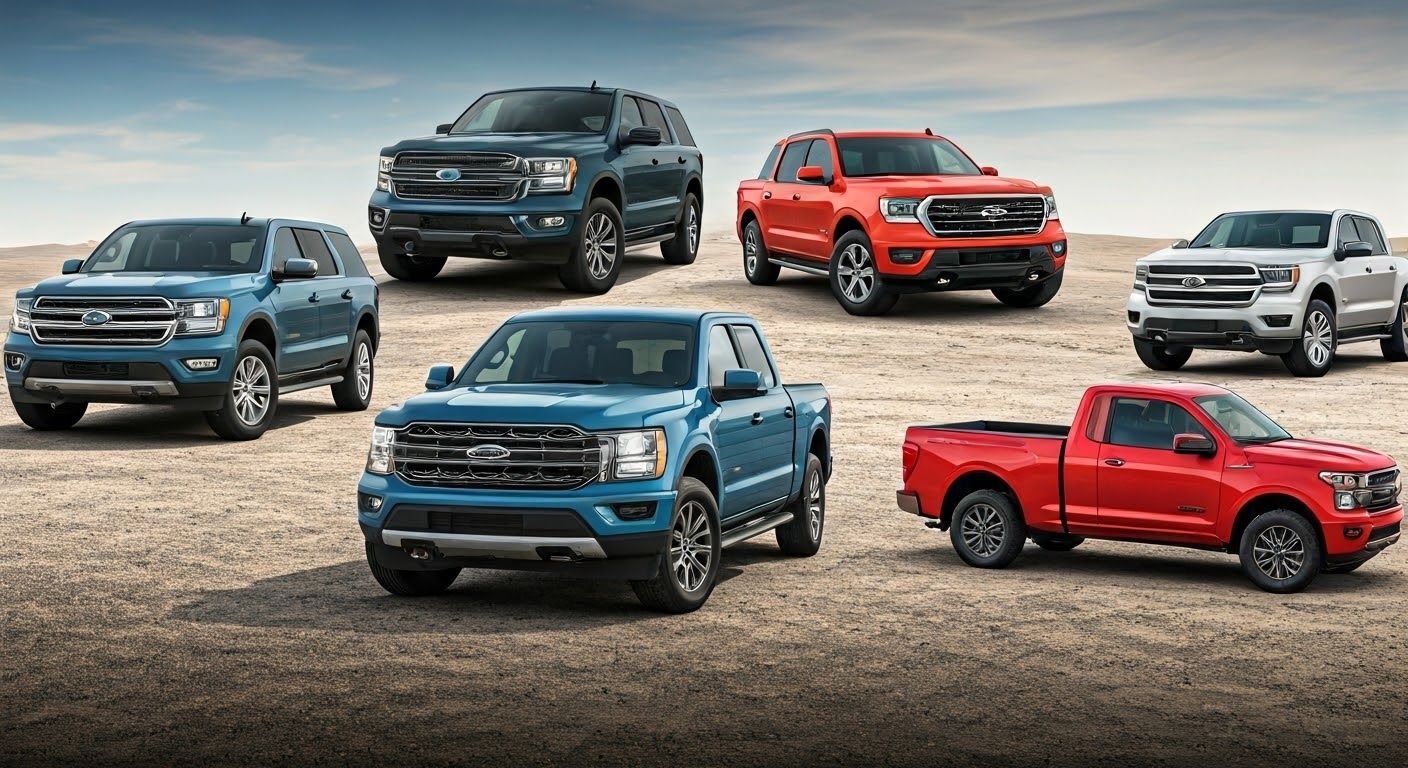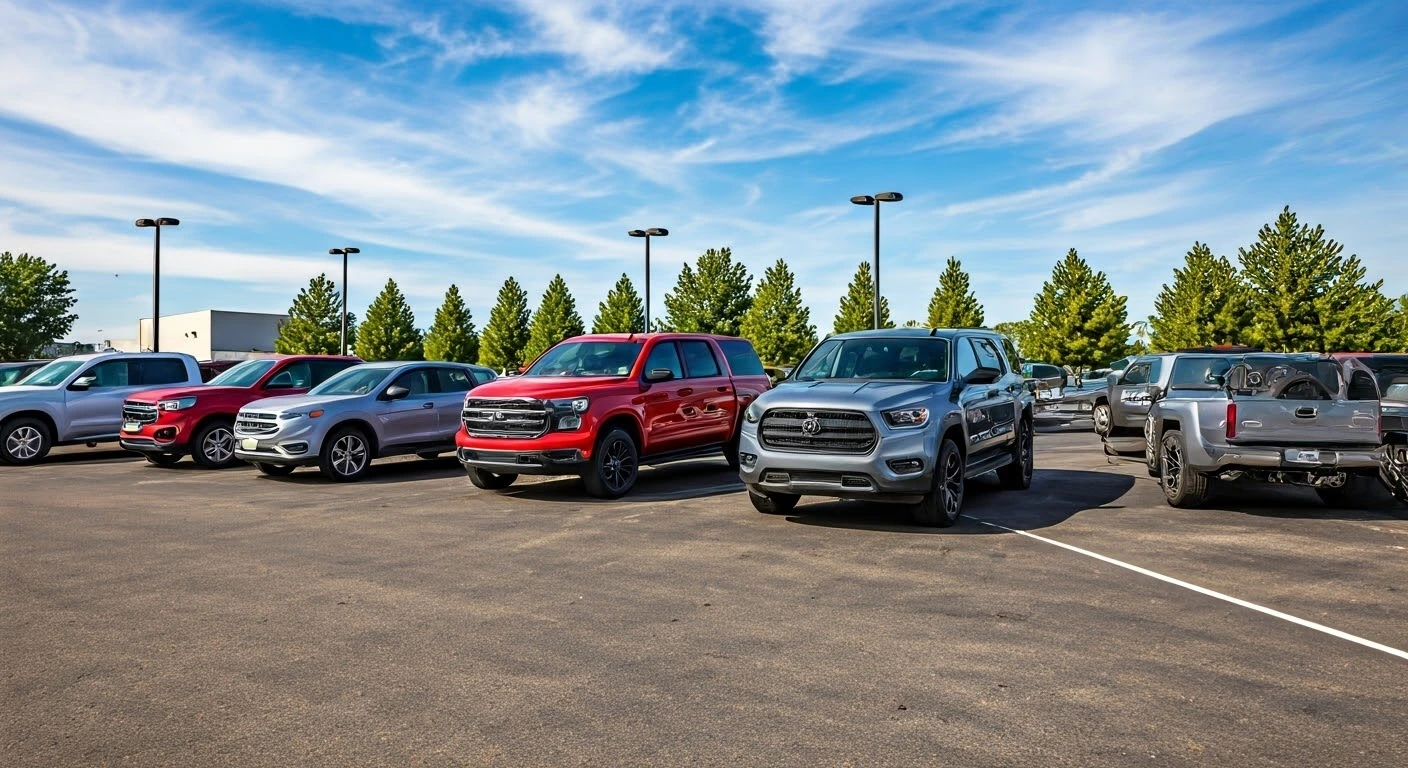By NexGen Support Team
November 26, 2024

Watch our video to learn how vehicles over 6000 lbs can help you save big in 2024!
The IRS Section 179 deduction helps businesses save on taxes when purchasing qualifying assets like heavy vehicles (Vehicles over 6000 lbs), machinery, and eligible software.
Internal Revenue Service (IRS) Section 179 allows businesses to deduct qualifying equipment costs. This includes vehicles over 6000 pounds of gross vehicle weight rating (GVWR). This weight includes the vehicle itself, its passengers, and their cargo. These vehicles must be used more than 50% for business purposes.
Alternative allowable deductions may apply if the vehicle is below this weight limit. Check with a qualified tax professional and see what business expenses you may claim as deductions to reduce your tax burden. Check the GVWR requirements for vehicles to ensure eligibility.
In 2024, taxpayers can claim a deduction of up to $30,000 for vehicles that weigh between 6,000 and 14,000 pounds. This adjustment applies to qualifying vehicles within this specific weight range, allowing for significant tax savings.
Section 179 vehicle list includes SUVs, trucks, and vans with a gross vehicle weight rating (GVWR) of over 6,000 pounds. This provision allows businesses to deduct the full purchase price of qualifying vehicles used for business purposes in the year they were placed in service.

Drive your tax savings forward with the IRS Section 179 deduction! See the list of vehicles over 6,000 lbs that qualify for big business tax breaks.
Heavy SUVs and crossover cars that qualify for vehicles over 6000 lbs, such as the Jeep Grand Cherokee, offer spacious interiors for cargo and passengers, making them ideal for business operations.
Tax Benefit: Deduct significant percent of purchase price in the first year under IRS Section 179 deduction.
Use Case: Great for businesses needing reliable, all-terrain vehicles with high cargo capacity.
Pickup trucks over 6000 lbs, like the Ford F-250, are invaluable for industries requiring towing and heavy-duty hauling.
Tax Benefit: Significant first-year deductions are available for these rugged modes of transport
Use Case: Perfect for construction, landscaping, and logistics businesses.
Luxury vehicles over 6,000 lbs, such as specific Range Rover or Cadillac Escalade models, can also qualify.
Tax Benefit: Depreciation limits may apply, with specific caps based on the IRS rules.
Consideration: Maintain detailed records of business use to avoid deduction errors. See our blog on what constitutes good record-keeping.
Deduction eligibility depends on how much the vehicle is used for business. You can easily calculate this by tracking business miles versus total miles driven. While several apps are available, the easiest way is to use a spreadsheet. Ensure that at least 50% of business use is qualified.
You must purchase and start using it within the tax year to claim the deduction. Proper timing can maximize your tax savings and improve your cash flow.
Keep documentation like purchase receipts, registration, and mileage logs. These records will support your claim and safeguard against potential audits.
If you’re claiming the Section 179 deduction, working with a vehicle valuation expert can really pay off. They’ll help you get an accurate valuation, ensure everything’s in line with IRS rules, and make sure you’re maximizing your deduction. Plus, they’ll provide the right paperwork, so you can avoid any headaches down the road and have a smoother tax process overall.

Stay audit-ready with solid record-keeping! Keep your receipts, registrations, and mileage logs organized to support your claims and secure your deductions.
“All vehicles qualify for Section 179.” – Only those over 6000 lbs GVWR primarily used for business are eligible.
“You can only deduct the purchase price.” – However, the purchase price and related costs, such as sales tax and registration fees, may also be deductible.
Accurate business reporting is non-negotiable for your success. Misreporting puts you at risk of costly IRS penalties, so you must maintain detailed logs. Consult a tax professional to understand depreciation limits and maximize your financial benefits and reduce tax liability. Take decisive action now—don’t let potential savings slip away!
The IRS Section 179 deduction is invaluable for businesses investing in over 6000 lbs vehicles. By understanding the eligibility criteria, maintaining accurate records, and strategically planning purchases, you can achieve significant tax savings while fulfilling your operational needs.
If you’re considering a purchase or have questions about the deduction, consult a tax advisor for tailored guidance.
The Section 179 deduction offers a strategic advantage for small business owners by allowing them to fully deduct the cost of certain qualifying purchases, such as vehicles or equipment, in the year of purchase. This is a departure from the traditional method of depreciating the asset’s value over several years. Let’s explore how this can benefit small businesses:
In essence, the Section 179 deduction provides an immediate financial incentive to invest in business assets, supporting both short-term financial health and long-term growth potential.
One downside of Section 179 is limits on deductible equipment costs yearly. For example, in 2021, the max deduction is $1,050,000 for eligible purchases. Specific rules define qualifying properties. If equipment isn’t used for business before its lifespan ends, a part of the deduction might count as income later. Consider your business finances and seek advice to decide on using Section 179.
The way you use your vehicle for business impacts your tax savings. It tells you the percentage of your vehicle costs that you can deduct. If you use your vehicle mostly for business, you can receive larger deductions.
Yes, there are limits for Section 179. Depreciation caps apply to certain vehicles, including luxury vehicles over 6000 lbs. They change each tax year. This affects the amount you can deduct.
The Section 179 deduction offers a strategic advantage for small business owners by allowing them to fully deduct the cost of certain qualifying purchases, such as vehicles or equipment, in the year of purchase. This is a departure from the traditional method of depreciating the asset’s value over several years. Let’s explore how this can benefit small businesses:
In essence, the Section 179 deduction provides an immediate financial incentive to invest in business assets, supporting both short-term financial health and long-term growth potential.
New, pre-owned or used passenger vehicles, heavy SUVs, trucks, and vans that are purchased and put into use in the same year qualify for this deduction. However, the vehicle must be utilized more than 50% of the time for business purposes.
Vehicles over 6000 lbs that qualify for Section 179 deductions typically include SUVs, pickup trucks, and vans. Some examples are the Ford F-250, Chevrolet Suburban, and Toyota Land Cruiser, as long as they are used for business purposes more than 50% of the time.
For vehicles over 6000 lbs, you can deduct up to $28,900 in the year of purchase (for tax year 2023) under Section 179. If the vehicle qualifies, you can also take 100% bonus depreciation on the remaining value, allowing you to write off the entire purchase price, depending on the total cost and the business use percentage.
The Section 179 Deduction allows businesses to deduct the full purchase price of qualifying equipment and/or software purchased or financed during the year. Depreciation, on the other hand, spreads the cost of the asset over its useful life, allowing for a portion of the cost to be deducted each year. This can provide immediate tax relief and help businesses reinvest in new equipment and technology.
No, you cannot write off 100% of an over 6000 lbs vehicle for tax purposes. The IRS allows for certain deductions based on the business use percentage of the vehicle, which includes factors such as how much the vehicle is used for business purposes versus personal use. It’s best to consult with a tax professional to determine the specific deductions you are eligible for based on your situation.
If you’re considering purchasing a vehicle over 6000 pounds for your business, it’s important to understand the annual depreciation limits outlined under Section 179. These limits ensure you’re compliant while maximizing your potential tax benefits.
Section 179 of the IRS tax code allows businesses to deduct the full purchase price of qualifying equipment and/or software purchased or financed during the tax year. It’s designed to encourage businesses to invest in themselves by easing the cost burden.
For vehicles weighing more than 6,000 pounds, commonly termed “heavy vehicles,” Section 179 provides a substantial write-off. Here’s how the limits apply:
By combining Section 179 and bonus depreciation, businesses can effectively reduce their taxable income, improving cash flow for further investments. Always consult with a tax professional to ensure compliance and optimization of your deductions.
The Section 179 Deduction allows small businesses to deduct the full purchase price of qualifying equipment and/or software purchased or financed during the tax year. To take advantage of the Section 179 Deduction, a small business can follow these steps:
1. Purchase or finance qualifying equipment: Ensure that the equipment purchased is eligible for the Section 179 Deduction. This can include machinery, vehicles, computers, software, office furniture, etc.
2. Check the total cost: Confirm that the total cost of the equipment does not exceed the Section 179 spending cap (which is subject to change annually).
3. Place the equipment in service: The equipment must be placed in service during the tax year you are claiming the deduction for.
4. Keep records: Maintain detailed records of the equipment purchase and use for tax purposes.
Navigating the complexities of the Section 179 deduction requires expertise, especially when dealing with vehicles. Vehicle valuation experts play a crucial role in this process. Here’s how they can assist:
Incorporating vehicle valuation experts into your tax strategy is not just a recommendation—it’s a smart move for any business considering a Section 179 deduction.
© 2024 NexGen Unlimited, LLC